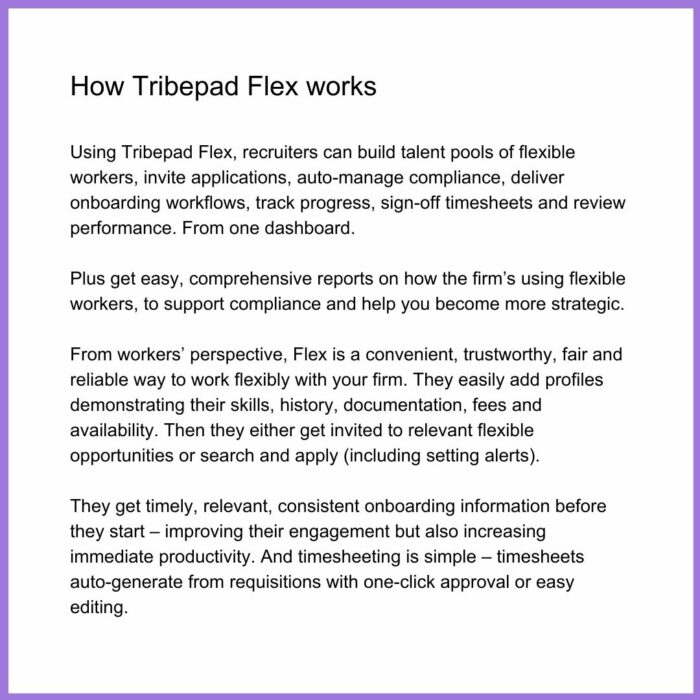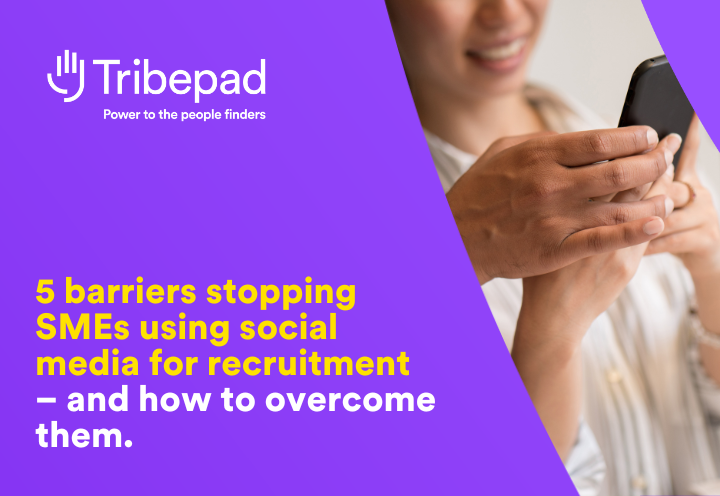Recruiters in the legal sector are on the frontline of a turbulent industry facing severe economic pressure. The pioneers of competitive advantage – or the harbingers of spiralling costs and plunging profits. To build a recruitment function that supports the firm’s long-term growth, recruiters must develop a proactive candidate attraction and retention strategy. You probably know that embracing flexible working is fundamental, especially post-COVID.
But that’s a pretty profound transformation for most firms.
Keep reading to discover how to make supporting flexible working easier – both to attract new talent and retain your existing workforce. And ultimately, to capitalise on the flexible workforce to operate more nimbly and react faster to market opportunities.
Why can’t law firms ignore the trend towards flexible working?
As traditional definitions of ‘work’ have evolved, employee expectations around flexible working have changed. So much so, PwC predict traditional, full-time, permanent workers could represent only 9% of the workforce by 2030.
Read more: How to maximise value from the non-traditional workforce
And since COVID, employees everywhere have had a taste of working more flexible hours, from home. For many people, that’ll be a hard cat to return to the bag.
(Slack’s Future Forum research found that only 12% of employees want to return to full-time office work after the pandemic, for example. 72% want a hybrid model that combines both.)
It’s true that employees in the legal sector mightn’t expect the same flexibility as, say, employees in Silicon Valley. But that doesn’t mean they’re happy to be chained to the office 24/7 either.
And the problem is, that’s not a million miles from the norm (in non-pandemic times, anyway). The truth is, only 33% of law firms offer flexible hours and only 22% offer remote working.
Lack of flexibility has been a murmur of discontent in the legal sector for years – and a steady drip of legal professionals lost to in-house roles that champion balance. Or to virtual law firms – which saw an increase of 22% from early 2019 to early 2020.
Now it’s likely to be an earthquake. And a tidal wave.
For law firms to attract (and keep!) the talent to meet client demand, now’s the time for urgent action on flexible working. (And if you need any more proof, Deloitte say flexible workers will be one of three major talent pools dominating law firms by 2025).
But that’s easier said than done.
What does it really take, to create and manage a flexible workforce?
Embracing flexible working really means two main things:
- Giving your people more options on how to work with you, with the contract that suits them.
- Supporting your people to achieve better balance, by leveraging flexible cover to cover workloads and plug gaps.
You’re probably shifting towards doing those things already. (If not motivated by employer brand then because leveraging freelance cover means expanding your project capacity for high-value work, accessing high-priority skills you might lack in-house.)
But are you doing those things in the best way? Because if you don’t have a clear strategy – and the technology to support it – you risk plunging the workforce into chaos.
Chaos like:
- Inconsistent recruitment processes (creating a poor contractor experience, risking poor-quality hires, increasing time-to-hire and frustrating candidates)
- Inconsistent policies for existing hires who want to work flexibly (damaging employee engagement and creating inequality)
- Inconsistent billing and timesheeting processes (causing spiralling admin hours, wasteful rate inconsistencies and reputation-hurting payment errors)
- Lack of clarity around the firm’s use of flexible workers (increasing compliance risk profile and hiding possible efficiencies)
- Ever-increasing agency spend and over-reliance on agencies (even to hire flexible workers you already knew, and could’ve hired direct)
There’s a better way. It’s called Tribepad Flex – a relatively new category of tech called contractor management software.
How contractor management software helps law firms champion flexibility
Tribepad Flex is like the ATS you use for your permanent, traditional workforce but for flexible workers. That is, it’s a single system to hire, onboard, manage, review, and manage compliance for flexible workers.
Flex enables firms to better support flexible working – and boost your employer brand accordingly – by:
- Inviting current employees to sign-up and create profiles, if they’d rather work with you on a flexible basis
- Inviting contractors you’ve worked with before to sign up, increasing recurring contracts and boosting contractor loyalty
- Empowering fast, simple, low-cost in-house management of ad-hoc flexible cover – for example, for sick cover or strategic project support
The important thing is, Flex doesn’t only empower firms to build a modern, flexibility-based employer brand that attracts and retains top legal talent. It also empowers you to leverage the flexible workforce in a more strategic way, to react faster to opportunities.
Flexibility isn’t just an employer branding play
In the context of survival-critical skills shortages, a tumultuous merger and acquisition landscape and spiralling pressure on cost-margins, law firms can’t afford to turn their backs on flexible working.
But embracing flexibility isn’t just an employer branding play. Done right, it empowers firms to improve resilience and become more agile – ultimately to support long-term growth.
To discover how Tribepad Flex can help you slash agency spend, take control over your flexible workforce and give your employer brand a major flexibility-based boost, book a demo now.




